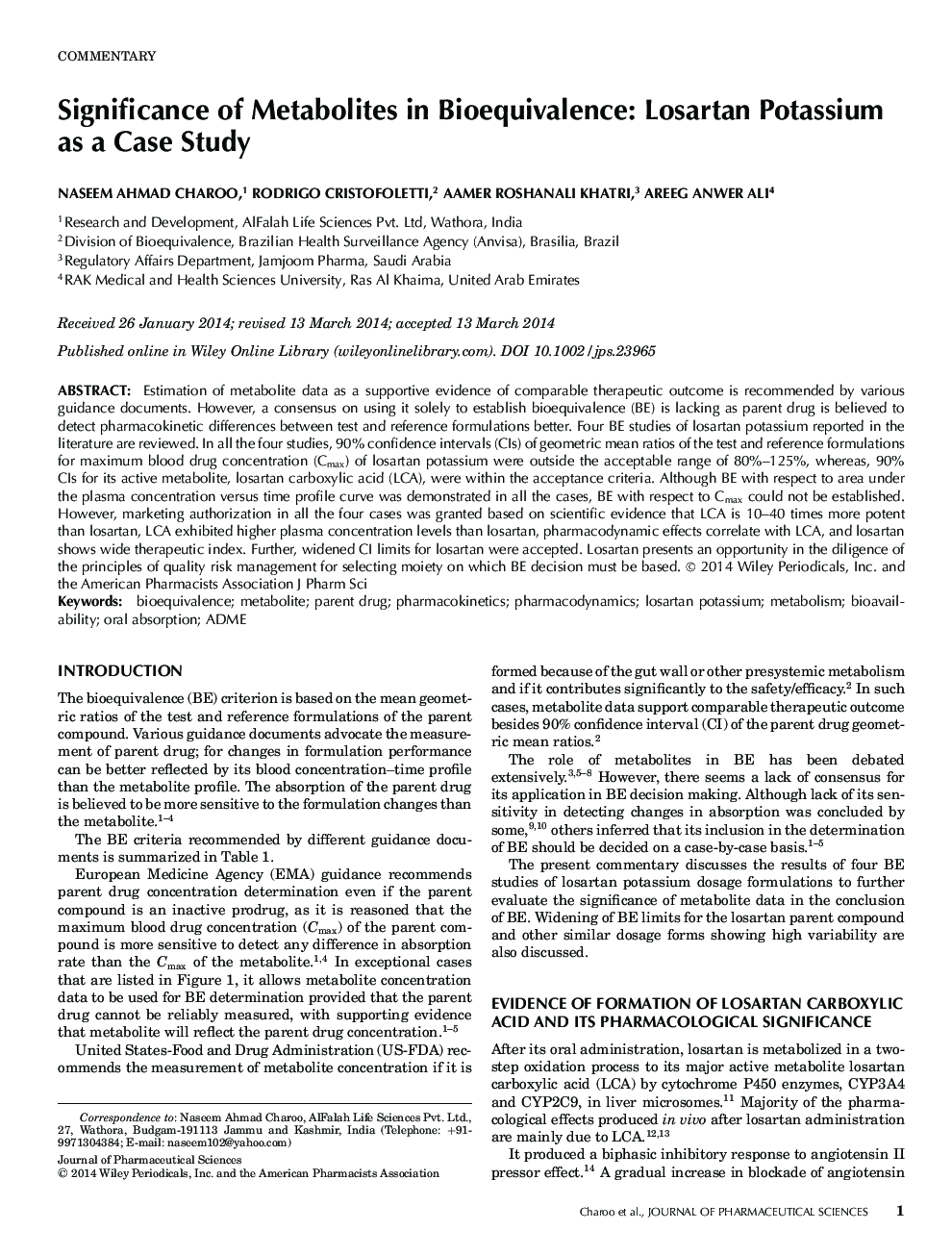| Article ID | Journal | Published Year | Pages | File Type |
|---|---|---|---|---|
| 10162473 | Journal of Pharmaceutical Sciences | 2014 | 8 Pages |
Abstract
Estimation of metabolite data as a supportive evidence of comparable therapeutic outcome is recommended by various guidance documents. However, a consensus on using it solely to establish bioequivalence (BE) is lacking as parent drug is believed to detect pharmacokinetic differences between test and reference formulations better. Four BE studies of losartan potassium reported in the literature are reviewed. In all the four studies, 90% confidence intervals (CIs) of geometric mean ratios of the test and reference formulations for maximum blood drug concentration (Cmax) of losartan potassium were outside the acceptable range of 80%-125%, whereas, 90% CIs for its active metabolite, losartan carboxylic acid (LCA), were within the acceptance criteria. Although BE with respect to area under the plasma concentration versus time profile curve was demonstrated in all the cases, BE with respect to Cmax could not be established. However, marketing authorization in all the four cases was granted based on scientific evidence that LCA is 10-40 times more potent than losartan, LCA exhibited higher plasma concentration levels than losartan, pharmacodynamic effects correlate with LCA, and losartan shows wide therapeutic index. Further, widened CI limits for losartan were accepted. Losartan presents an opportunity in the diligence of the principles of quality risk management for selecting moiety on which BE decision must be based. © 2014 Wiley Periodicals, Inc. and the American Pharmacists Association J Pharm Sci 103:1584-1591,2014
Keywords
Related Topics
Health Sciences
Pharmacology, Toxicology and Pharmaceutical Science
Drug Discovery
Authors
Naseem Ahmad Charoo, Rodrigo Cristofoletti, Aamer Roshanali Khatri, Areeg Anwer Ali,
